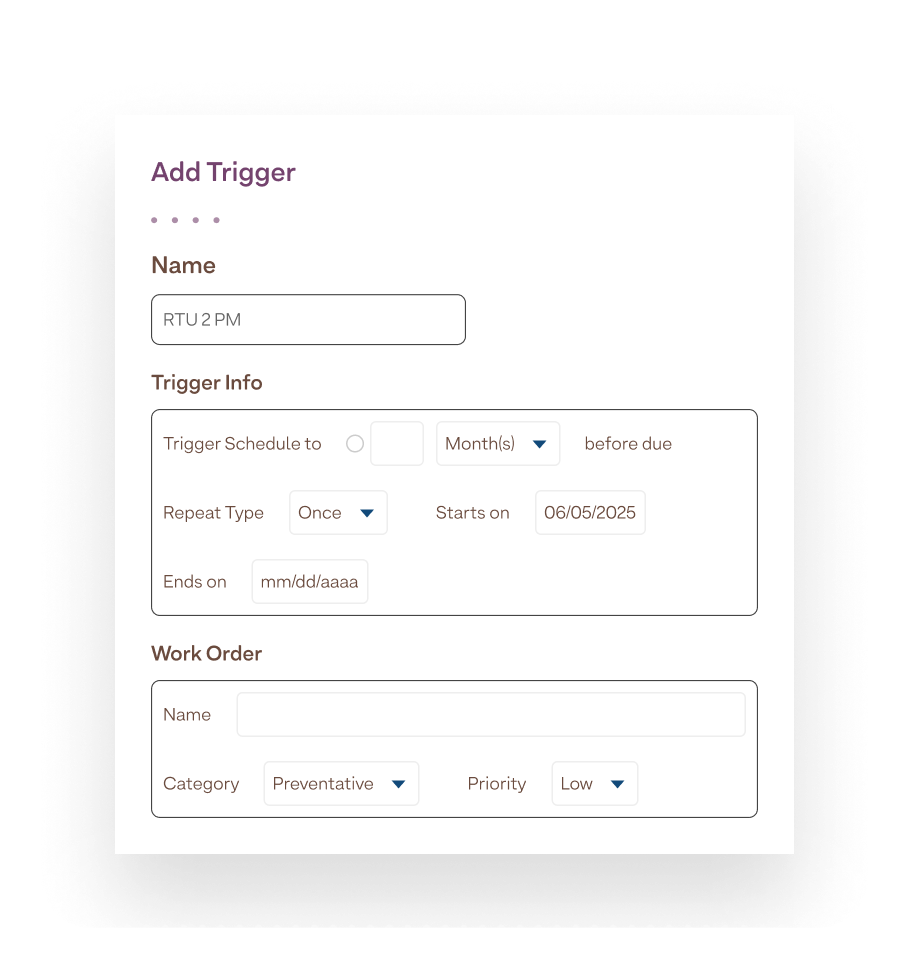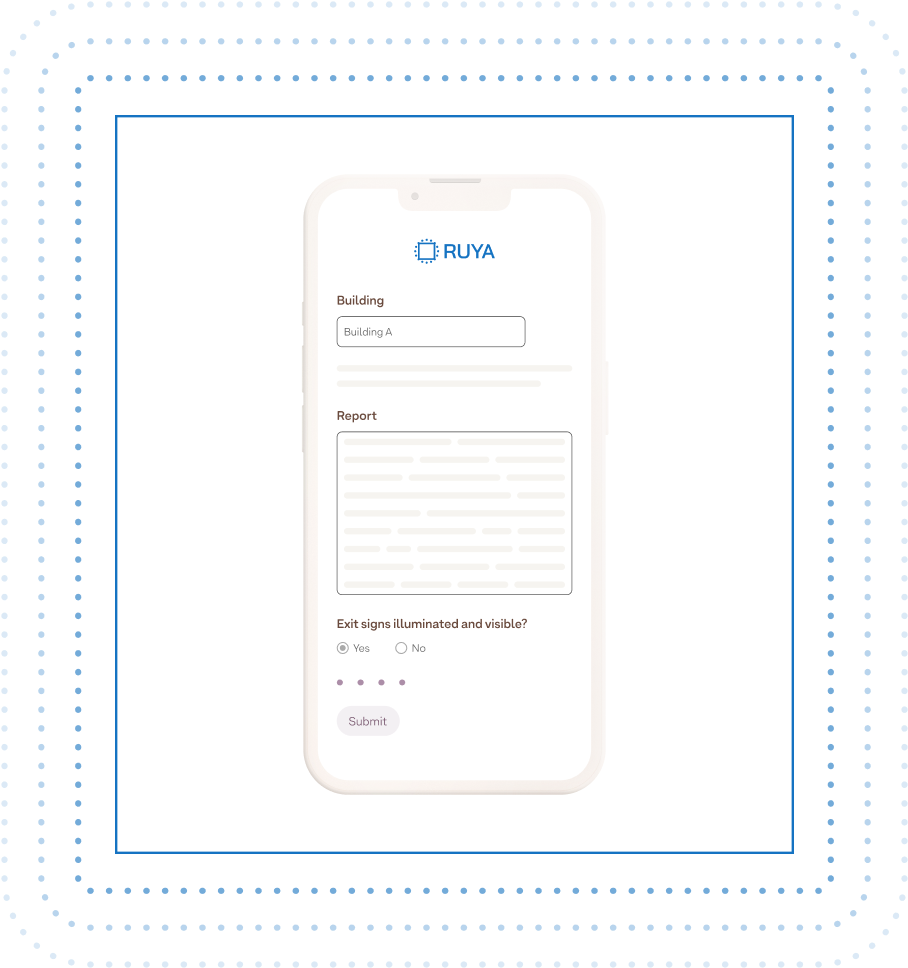What is Work Order Management? A Complete Guide for Healthcare Facilities

Quick summary
In large healthcare facilities, even small delays in maintenance can disrupt operations and impact patient care. This guide breaks down how to manage work orders effectively, so your team stays organized and responsive. You’ll also see how Ruya’s mobile-first platform simplifies work order management with real-time visibility, automated scheduling, and faster follow-ups in one unified system.
Want to master work order management?
If you’ve ever walked through a hospital corridor during a maintenance delay, you know how quickly a small issue can snowball into a major disruption.
Many facility teams still rely on paper trails, outdated spreadsheets, or siloed systems, making it nearly impossible to track progress or ensure accountability across departments.
Modern healthcare facilities need smarter, faster, and more connected ways to manage work orders. In this Ruya article, we’ll break down what effective work order management looks like in a hospital setting, and how tools like Ruya help teams simplify it in real time.
But first…
Why listen to us?
At Ruya, we help leading hospital systems modernize facility management with a unified, mobile-first platform. Our features, like real-time CAD/BIM viewing, mobile inspections with compliance checklists, and a per-building vendor directory, streamline operations and reduce IT reliance. We empower healthcare teams to maintain safer, more efficient, and fully compliant facilities.

What is a work order?
A work order is a document used to request and track maintenance or repair tasks. It’s essential for organizing tasks, assigning responsibilities, and monitoring completed work. Work orders ensure that all tasks are efficiently managed and that nothing is overlooked.
Work orders come in various types:
- Preventive maintenance: Regular tasks aimed at preventing future issues.
- Corrective maintenance: Addressing problems as they arise, like repairing broken equipment.
- Emergency: Urgent requests for unplanned issues, like equipment failures that need immediate attention.
- Service requests: Tasks requested by users or clients, typically for non-urgent work.
Each work order typically includes these key components:
- Task description: A detailed explanation of the work that needs to be done.
- Assigned personnel: The individual or team responsible for completing the task.
- Materials needed: Tools, parts, or other resources required to complete the task.
- Timeline: Expected start and completion dates for the task.
For example, a work order could be created to repair a malfunctioning air handling unit in a hospital’s surgical wing. The order would include the issue (temperature fluctuation in operating rooms), the assigned technician, required parts (motor or sensor replacement), and a deadline to minimize disruption to patient care.
In essence, work orders help organizations stay organized and ensure the timely completion of tasks, whether preventive or emergency.
Life cycle of a work order
The life cycle of a work order is a structured process that manages tasks efficiently from start to finish. It begins when a task is identified and a work order is created, either for maintenance, repairs, or service requests. It involves the following stages;
- Creation: The work order is generated with details like task description, assigned personnel, materials needed, and deadlines.
- Approval: The work order is reviewed and approved, aligning it with priorities and available resources.
- Execution: The assigned team or individual performs the task, following the outlined requirements.
- Completion: Once the work is completed, the task is closed, and necessary updates or documentation are added.
Afterward, the work order is archived for record-keeping. This allows for performance tracking, cost analysis, and future reference.
See how healthcare organizations manage record-keeping by setting up document control systems.
Work orders vs. work requests
Work orders and work requests (or service requests) are closely related, but they serve different purposes.
A work request is the initial step, while a work order is the formal document that tracks the task’s progress.
Here’s how they differ:
- Initiation: A work request is submitted by a user for a service or task, while a work order is created once the request is approved.
- Purpose: Work requests identify needs; work orders provide detailed instructions and track completion.
- Responsibility: Work requests often come from anyone needing a service, while work orders are assigned to specific teams or individuals to execute the task.
Benefits of using work order management software
- Improved efficiency: Automates repetitive tasks and streamlines workflows so teams can focus on higher-priority work.
- Real-time visibility: Provides instant updates on task progress, helping teams spot delays and act quickly.
- Centralized information: Keeps all work order details, documents, and updates in one accessible platform.
- Fewer errors: Reduces manual data entry and miscommunication through automated scheduling and tracking.
- Faster response times: Enable quick task assignment and resolution, minimizing downtime.
How to successfully manage work orders
1. Define clear task requirements
Every work order should start with a clear description of what needs to be done. Avoid being ambiguous, as it leads to confusion and extra back-and-forth.
Include these key details to make your task requirements clear.
- Task details: Describe the issue or maintenance needed in simple, specific terms.
- Scope: Define what’s included in the job and what isn’t.
- Assigned personnel: Assign the task to the right person or team.
- Materials needed: List all tools, parts, or supplies required to complete the work.
Our platform lets users attach annotated floor plans (PDF, DWG, Revit) to each work order and add specific vendor, asset, or room references. Because everything is organized per building, field teams can access the right info from mobile without any guesswork or extra calls.

2. Assign tasks efficiently
Efficient task assignment leads to timely completion. Assign tasks based on personnel expertise, availability, and workload. This ensures that the right people handle the right jobs, minimizing delays and errors.
Follow these steps for better task assignment:
- Match skills with tasks: Make sure the person handling the job has the right expertise.
- Prioritize tasks: Schedule high-priority work first to avoid backlogs.
- Use resources effectively: Confirm teams have the tools and information needed to complete the task.
With Ruya, you can create work orders from failed inspections or logged issues and immediately assign them to staff through our mobile app. Because each task is linked to a specific building, maintenance teams have the room numbers, asset details, and floor plan links ready.

3. Monitor progress in real-time
Ongoing monitoring keeps work orders on track and helps teams respond quickly when plans change. Real-time visibility ensures issues are spotted early and resolved before they cause delays.
To stay on top of progress:
- Track task status: Use live updates to see what’s done, what’s pending, and where delays occur.
- Instant notifications: Get alerts when a task is completed or needs attention.
- Adjust priorities: Reassign work or shift timelines as conditions change.
With our QR code–enabled inspections and mobile reporting, supervisors can view updates as tasks are completed or flagged. If conditions shift onsite, they can reassign or escalate tasks instantly in the app, no manual data entry required.

4. Review and close the order
When a task is finished, review the work before closing the order. This ensures it meets quality standards and provides a clear record for future reference.
To complete the process:
- Verify completion: Check that the work matches the original request and meets all requirements.
- Document results: Add notes on outcomes, follow-up actions, or any issues identified.
- Archive for reference: Store the completed order for future tracking or audits.
With Ruya, once a work order is closed, all related drawings, inspection logs, and notes are automatically archived by building. This turnover data capture creates a searchable record of completed work, making it easy to plan future maintenance, process warranty claims, or prepare for compliance reviews.

Best practices for work order management
- Prioritize preventive maintenance: Schedule and perform maintenance proactively to avoid equipment failures and ensure essential hospital systems, like HVAC and medical devices, run smoothly.
- Use real-time data for maintenance planning: Leverage Ruya’s real-time floor plan updates and mobile inspections to monitor equipment status and schedule preventive actions before issues arise.
- Leverage data analytics for resource allocation: Analyze performance data to forecast maintenance needs, track task progress, and distribute workloads efficiently.
- Enable mobile access for on-the-go management: Equip staff with mobile tools to view updates, complete inspections, and manage work orders from anywhere, improving response time and coordination.
- Standardize workflow processes: Create consistency by defining clear, repeatable procedures for all maintenance tasks. Ruya’s built-in checklists and templates ensure accuracy and reduce human error.
- Integrate with asset management systems: Link work orders to specific assets and locations using Ruya’s vendor and asset directory to maintain repair histories, track warranties, and support preventive maintenance.
Improve your work order management with Ruya
In hospitals, every delayed repair or missed inspection affects safety and compliance. Managing hundreds of maintenance requests across multiple sites shouldn’t feel chaotic.
Ruya streamlines this entire process. Our healthcare-focused platform automates task scheduling, links every work order to real-time floor plans, and gives teams mobile access for faster response times.
Schedule a demo with Ruya and see how effortless work order management can be.

.svg)


